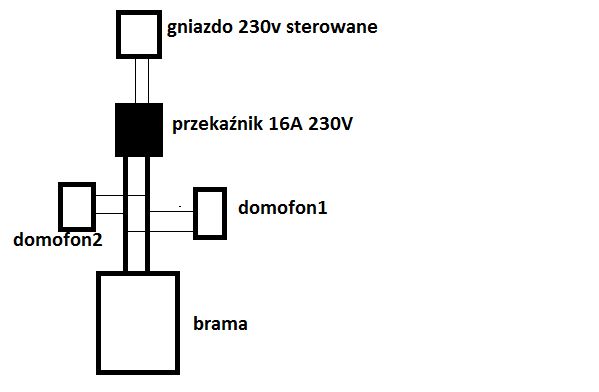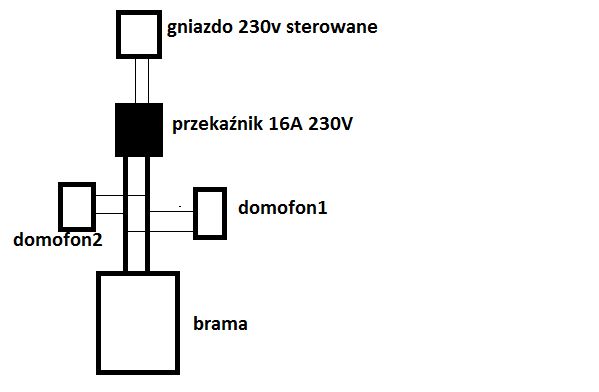Hello,
I have connected a 230v socket (which I control from another device ) to a relay, the relay to the gate, in order to control it (by closing the circuit)
Attached is a diagram of how I connected this.
The relay is ELECTROMAGNETIC RELAY 16A 230V F&F PK-1P
The way it works is that the socket gives voltage to the relay for a fraction of a second, the relay closes the circuit.
After connecting everything worked fine, I made about 10 attempts, the gate opened and closed.
After a couple of hours, I switched the socket on again (applied voltage) and the door started to open for about 1-2 seconds, and then the plugs blew - but not from the socket, but from the power supply to which the intercoms are connected.
I dismantled the installation and fortunately nothing was broken, but I'm already afraid to carry out further tests.
I am asking more experienced people to help me with what I might have done wrong. I think I have wired this simple diagram correctly.
The only "problem" I've noticed with the socket is that sometimes, due to an error, the socket gives voltage for more than a fraction of a second e.g. 1-5 seconds (the solution could be a timer relay) but this is probably not a problem as it sort of mimics a longer button press and nothing happens then.
Or maybe the relay itself is weak and it transmitted 230v? Is this possible ?
The relay is an ELECTROMAGNETIC RELAY 16A 230V F&F PK-1P
Thank you for your help
I have connected a 230v socket (which I control from another device ) to a relay, the relay to the gate, in order to control it (by closing the circuit)
Attached is a diagram of how I connected this.
The relay is ELECTROMAGNETIC RELAY 16A 230V F&F PK-1P
The way it works is that the socket gives voltage to the relay for a fraction of a second, the relay closes the circuit.
After connecting everything worked fine, I made about 10 attempts, the gate opened and closed.
After a couple of hours, I switched the socket on again (applied voltage) and the door started to open for about 1-2 seconds, and then the plugs blew - but not from the socket, but from the power supply to which the intercoms are connected.
I dismantled the installation and fortunately nothing was broken, but I'm already afraid to carry out further tests.
I am asking more experienced people to help me with what I might have done wrong. I think I have wired this simple diagram correctly.
The only "problem" I've noticed with the socket is that sometimes, due to an error, the socket gives voltage for more than a fraction of a second e.g. 1-5 seconds (the solution could be a timer relay) but this is probably not a problem as it sort of mimics a longer button press and nothing happens then.
Or maybe the relay itself is weak and it transmitted 230v? Is this possible ?
The relay is an ELECTROMAGNETIC RELAY 16A 230V F&F PK-1P
Thank you for your help








